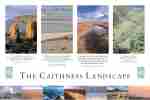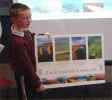|
Frances Thin, Landscape Adviser, Scottish Natural
Heritage
Describing Caithness From The Heart As Opposed To Her Technical
Assessments
If someone asks you to describe someone’s
character, or asks “do you know that character?” then we tend to respond
in a different way than we might to the question “do you know how to do
that quadratic equation?”. We become more engaged, animated and
expressive, and sometimes opinionated.
From a distance we register a person from their shape and
form, from their outline, edge and profile. Caithness is no different.
From a distance, Caithness is rugged and crenellated at its edges and
smooth and rolling in its centre.
Edge is important in defining shape and giving form.
Caithness’s coastal edges provide some of its most characteristic
features. The cliffs of Duncansby, Holburn Head and Dunnet, the wave-cut
platforms and rocky coastline of the north coast and the raised beaches of
the east, the sweeping beaches of Sandside, Dunnet and Keiss, Stacks at
Duncansby and Lybster. The ice scoured this landscape and plucked at
its edges. In the interior, edges are less clear - more important here are
the outline and profile of the (well-kent) landforms of Morvern and the
Scarabens , Ben Ratha and many hills of lesser height but no less stature.
Outline and profile are phenomenally powerful in the way we
experience our surroundings. As babes in arms we recognise the profile of
our mother's face within days of birth. As residents and visitors to
Caithness we recognise these significant natural landmarks.
Landmarks emphasise familiarity, influence sense of place,
and provide the strings that fix things in the memory.
Though more prominent in the way we experience the shape of
the land, outlines and profiles don't just go up ... the lochs of Calder,
Watten and St John's Loch occupy the slight hollows in the landscape,
creating one of the most stunning edges between land and sky. A horizon so
low that light and space dominate.
And cut into the land are low-lying river valleys, the subtle but
essential veins and arteries of Caithness.
But let's zoom in a little on this character called
Caithness. Past the prominent surface features, we find the simple
shapes and outlines softened by vegetation, coarsened by rock, chequered
by patterns of land use centuries old, and the forever changing
expressions of the coastline. Woodlands, rivers, mosses, lichens and
rocks, patterns overlaid on the gentle ups and downs of this vast
landscape. You could travel through Caithness and take away only the
impression of sky and space, but if you look and feel this land you'll
find its gems. Nooks and crannies, shelter and calm. This is the scale at
which a child experiences a landscape, inside looking out, touching.
Where rocks and trees become real. Secret places, a
mysterious cave. Stories and images wrapped around nature, enduring
memories, to give some sanity to their futures.
Generations have taken this sweeping and vast character,
used it, hunted across it, tamed it, farmed it, fished it, left their
footprint in a landscape poc-marked with cairns, brochs and standing
stones, and quarries, criss-crossed with dykes and flag fences spotted
with croft houses and farms, castles, mills, harbours and icehouses, and
settlements that fit into and around the shape of the land. Giving this
character a 'skin' so experienced, time worn, and rich in the cultural
heritage.
And if we zoom in still further, close enough to touch and
hear and smell, as well as see, we will find that there is movement upon
the care-worn surface of this character, Caithness.
Humans, people, integral to the character itself, working and playing.
Shaping and managing this land, the ‘one time’ bread basket of the north,
playing a role in the everyday, and the iconic. People and place woven
together as in time immemorial.
Here we have a living landscape, scars, warts and all. Not
a view through a window, or a captured image.
A rich and varied inheritance to treasure, to enjoy and
use, but always to nurture and never deplete.
When it comes to the notion of landscape, there are some
commonly held constructs, some basic premises, and shared tools and
approaches, but we each value the landscape through our own eyes, and
coloured by our own experience. What is one person's glory can be another
person's desecration.
Whilst multiple perspectives make it difficult to gain
agreement, this is part and parcel of what makes the very concept of
landscape so valuable.
The first time I came to Caithness my husband had just
accepted a job here. It was March, it was cold and there was sand in air
rasping at my face. But by May I was dazzled by long days and birdsong, by
June I was hooked and the next winter wasn't so bad.
I shall finish today with one man's words on Caithness. As
a son of Caithness, Neil Gunn captures the uncapturable. "…you walk out
upon Caithness, and at once experience an austerity in the flat clean wind
swept lands that affects the mind almost with a sense of shock. There is
something more in it than contrast. It is a movement of the spirit that
finds in the austerity, because strength is there also, a final serenity.
I know of no other landscape in Scotland that achieves this harmony, that,
in the very moment of purging the mind of its dramatic grandeur, leaves it
free and ennobled."
Frances Thin 28 June 2005
At The Launch Of The New SNH Caithness Poster
|
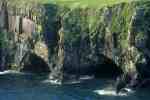
Set One
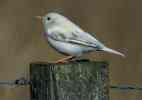
Set Two
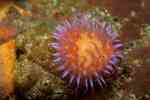
Set Three
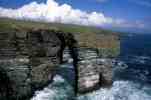
Set Four
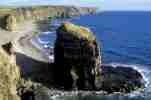
Set Five
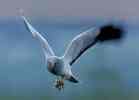
Set Six
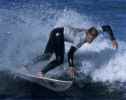
Set Seven
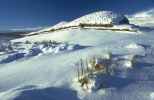
Set Eight
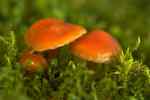
Set Nine
For A Full Listing Of Each Set Of Pictures
Click Here |
